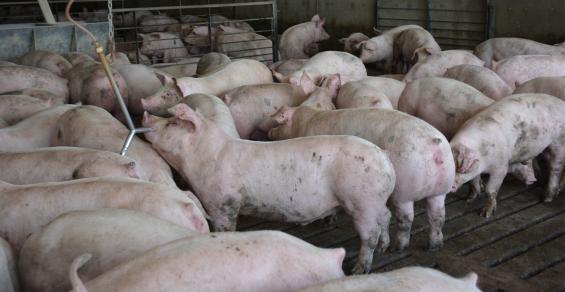A nickel here, a nickel there was the shift in funding set forth by the two pork industry organizations at the recent National Pork Industry Forum held in Louisville, Ky. This shift in funding prioritizes key industry priorities and allocates funding to support recommendations from the Pork Industry Visioning Taskforce.
Delegates of the National Pork Board approved a 12.5% reduction in the Pork Checkoff rate. This approved rate reduction from the current 40 cents to 35 cents per $100 value per live animal will go into effect no later than Jan. 1.
The resolution — offered initially by Minnesota, Indiana and Ohio, and joined in support by Iowa, Nebraska, Illinois, Montana and South Dakota — passed the Pork Act Delegate Body with 94% of shares voting in favor.
A group of 19 industry leaders from the NPB, National Pork Producers Council and various states had been formed as the Pork Industry Visioning Taskforce, charged with discussing industry priorities, organizational structure and resource needs of the U.S. pork industry to ensure its long-term success.
According to the Pork Checkoff’s website, in 2020, pork producers marketed over 131 million pigs, which provided total cash receipts of more than $19 billion.
“Producers have told industry leadership they expect us to be efficient, strategic with their dollars,” says Gene Noem, NPB president and a producer from Iowa. “Despite the reduction in the mandatory checkoff rate, the Pork Board will continue its critical work of research, promotion and education.”
Though both organizations represent the 60,000 U.S. hog producers, each has its distinct mission. NPB uses the Pork Checkoff for education, research and promotion on behalf of producers.
“Our [NPB] job is to build the base for the industry so we can educate and inform and use the mandatory checkoff, which has got all the producers involved in it, doing the research to pull together the facts necessary to tell the story about real pork, the real farmers on real farms producing those pigs,” says Bill Even, NPB chief executive officer.
“That’s what people are really concerned about,” he says. “So if we’re doing our job helping educate the consumer, helping do research for science and environment and sustainability, research around nutrition, we build a body of evidence with the checkoff. Our job is to then deliver that out to all the producers and all the industry, and then others can take that and actually use it for proof points when we’re working on issues.”
Through public-policy outreach, NPPC argues for reasonable legislation and regulations, and develops revenue and market opportunities.
NPPC also has its own political action committee, PorkPAC, dedicated to educating and supporting federal lawmakers and candidates who support pork producers.
During Pork Forum, NPPC delegates approved an increase in the investment rate of the Strategic Investment Program (SIP) from the current 10 cents per $100 value of live animal to 15 cents. This rate change has the same target date as the Pork Checkoff adjustment of no later than Jan. 1.
This resolution was introduced by the Minnesota Pork Producers Association, and supported by the Iowa Pork Producers, Ohio Pork Producers, Illinois Pork Producers and Indiana Pork Producers.
“The cornerstone of our industry is a shared vision and industry participation. The change in funding will allow NPPC to tackle challenges in new ways and be more proactive at the national and grassroots levels,” says Bryan Humphreys, NPPC chief executive officer.
The return-to-state portion of funding will remain at 40% of the gross SIP dollars attributable to the state of origin for the animals marketed.
The rate changes are just two recommendations from the Pork Industry Visioning Taskforce.
Pork Checkoff rate drops a nickel; Strategic Investment Program adds a nickel.




